Copyright 2020 - 2021 irantour.tours all right reserved
Designed by Behsazanhost
A Journey through the National Museum of Iran-Tehran
A Journey through the National Museum of Iran-Tehran
Iran has a fairly long history of human occupation, extending well over one million years. Not all of this long span, however, is considered 'history' in the strictest sense, i.e., recorded by the documentary - written - evidence. In fact, writing is a fairly recent innovation in human history, emerging some 5,000 years ago as a result of major developments in human societies. Therefore, the bulk of Iranian history is in fact 'prehistory? In order to understand Iranian prehistory, we must adhere to evidence, discussed in the form of archaeological finds, in order to build a historical account of the evolution of human societies in this region. The nine objects referred to in this brief essay by no means cover the entire range of human history in Iran. Rather, they simply highlight important markers in human history when humanity took major leaps forward in its journey from small bands of hunter-gatherers to large empires. These nine objects do not evenly represent the entire range of aspects of human culture, nor are they distributed equally across the history of human occupation in Iran. While the earlier artifacts are concerned with subsistence, as we move forward in time we increasingly find objects that are ideological nature. The reader, therefore, should bear in mind that we are dealing with a small number of objects, meager in its coverage - chronologically, spatially, and functionally. These nine objects cannot tell a comprehensive history. Yet, they provide a fascinating insight into certain aspects of the history of human society in Iran and perhaps can provide a starting point for those interested in learning more.
More: National Museum of Iran-Tehran
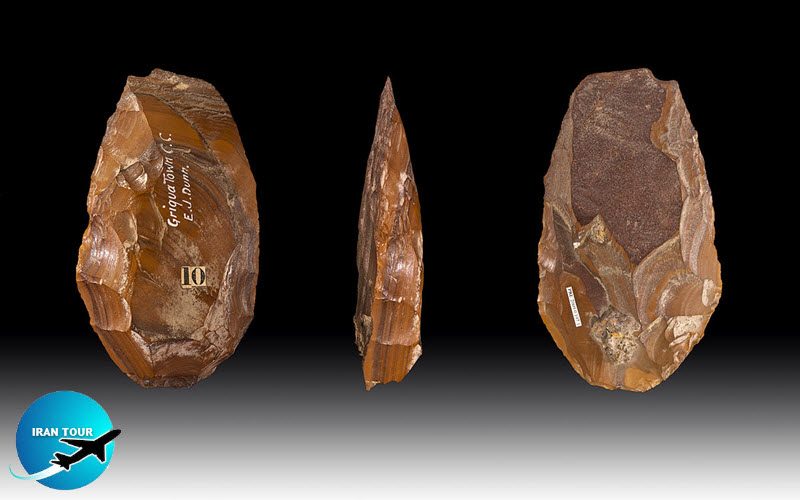 |
1. Paleolithic Period
Stone tools such as this biface - which is a tool or weapon with two faces - provide evidence that groups of early humans crossed through Iran as their populations expanded throughout Europe and Asia. Objects such as this flint biface were practically all they required for their hunter-gatherer way of life because it was made of a fairly widely-available stone that could be fashioned into a multifunctional tool by means of a number of carefully executed strikes. A biface like this could be used as a projectile to hunt game and as a sharp tool to skin and butcher the prey. Further, it could be used as a pounding tool to smash long bones and to extract marrow - an excellent source of nutrients and protein that played a crucial role in our hominid ancestors' brain development and thus helped to augment their cognitive prowess. In addition to its use in hunting activities, a biface such as this could be used as a digging tool for finding roots or to break the shells of nuts, clams, and other edible material, which were also a source of food for hunter-gatherers. It is therefore not surprising that biface tools have been called 'the Swiss Army knife of early humans; they were handy, multifunctional tools that were made and used by early humans for nearly 1.5 million years, longer than any other tool has been used in human history,
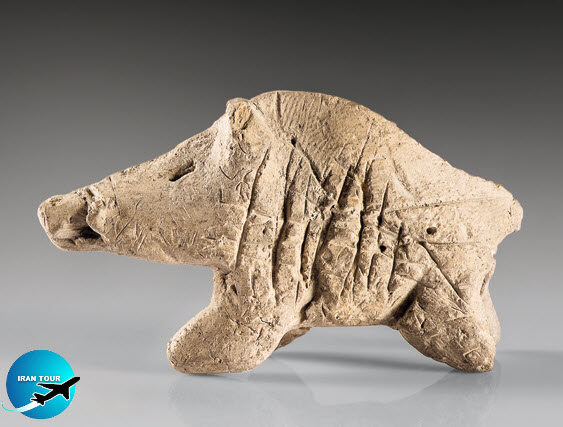 |
2. Neolithic Period
After dogs and cats, pigs were the third animal domesticated by humans, around 10,000 BCE. There are two important points about the pig: Firstly, unlike dogs or cats, pigs were domesticated as a source of food until they were displaced by other ungulates such as goats, sheep, and cattle, which were more adapted to the semi-arid environment of West Asia. Secondly, recent genetic analysis suggests that the domestic pig (Sus scrofa domesticus) was actually domesticated not from the wild pig (Sus, Suidae), but from the wild boar (Sus scrofa). Physiologically, the most obvious difference between the two species is the pronounced lower canine teeth in the latter. And this is what brings us to this elaborate little baked clay figurine. As groups of early humans were giving up their ancient hunter-gatherer way of life and settling down in small hamlets such as Tepe Sarab, modern-day Kermanshah, in the Early Neolithic period, they began to experiment with the domestication of animals, including the pig. The artist who made this figurine, which dates from ca. 6th millennium BCE, was clearly aware of the aforementioned physiological characteristics of the boar and thus emphasized the boar's long lower canine tooth with an incision on the figurine's snout.
 |
3. Chalcolithic Period
Before a master craftsperson sat down to create this sophisticated beaker, around 4,000 BCE, the craft of pottery had some 4,000 years of history in several different regions in Iran, including Susiana, or Elam, the fertile plain around the town of Susa where this beaker was made. This is a splendid piece of craftsmanship, both technically and in terms of artistry. Made by hand with extra fine silt, this beaker bears a complex array of designs and motifs that together convey a sociocultural - and perhaps ideological - message largely undecipherable by our modern minds but clearly comprehensible to contemporary observers. The fact that this beaker was buried in a grave as a receptacle for the bones of the deceased is an indication of its prestige and a sign of the transforming socio-economic fabric of prehistoric societies.
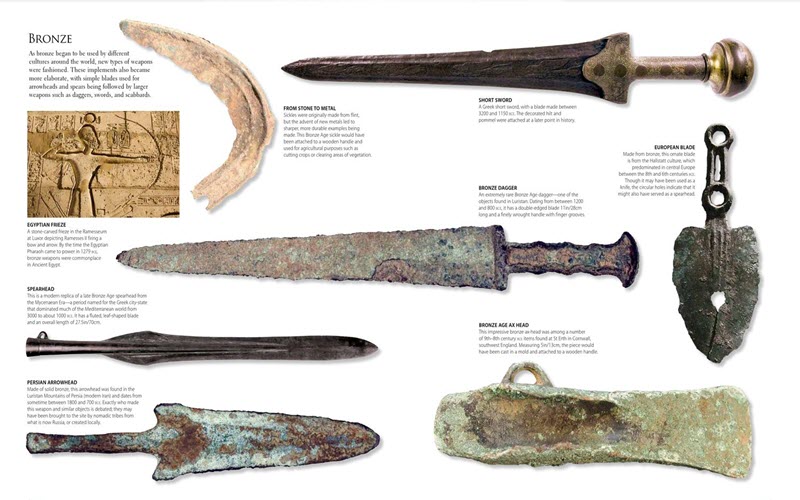 |
4. Bronze Age Period
This terracotta statue of a bull bears the inscription of king Untāsh-Nāpirishā (ca. 1250 BCE) of the Ige-Halkid dynasty (ca. 1350-1200 BCE; Middle Elamite period). Several duplicates of this statue were discovered in a fragmentary state in the storage galleries of the Chogha Zanbil complex. This particular example was restored by archaeologist and restorationist Tania Ghirshman (1900-1984), a dentist by training and the wife of Roman Ghirshman, the French archaeologist and excavator of Choghā Zanbil. Later, it was put on display in the National Museum of Iran. Cattle, both male and female - bull and cow - have had a long history in West Asia, including ancient Iran. They were widely venerated for their wide range of by-products and remarkable prowess. While they have acquired a sacred status in India, cattle were also highly regarded by the people of ancient Iran and came to be depicted in various forms - from seals of the prehistoric period to colossal column capitals of the Achaemenid palatial complexes at Persepolis and Susa.
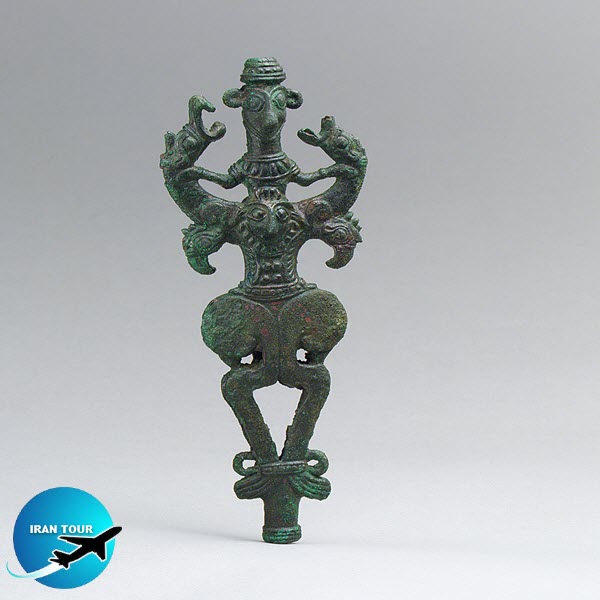 |
5. Iron Age Period
This outstanding gold 'ring’ - for lack of a better term - was discovered in the tomb of a nobleman by the name of Kid in-Hutran, son of Kurlush at Arjān to the north of the town of Behbahan in 1983. Dating from the late 7th or early 6th century BCE, this ring is a find of major significance in a number of different and important ways: Firstly, in conjunction with other objects discovered in the tomb, it was a sign of high political status, perhaps even royalty. Secondly, it is an object of masterly craftsmanship, displaying remarkably high technical achievement as well as excellent artistry, qualifying it as one of the masterpieces of Elamite art and metallurgy. Thirdly, the designs and motifs depicted on this ‘ring' mark an important transitional phase from the archaic' phase to the Early or proto-Achaemenid style of Iranian art.
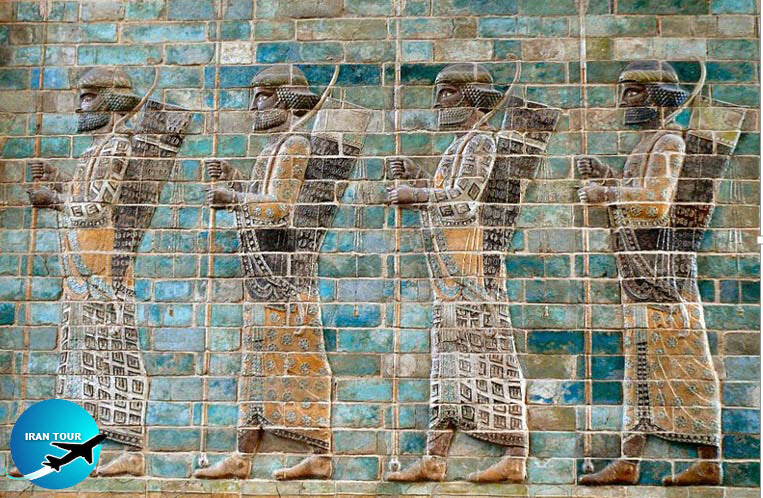 |
6. The Achaemenid Period, This glazed brick panel depicting the royal guard once decorated the walls of the Achaemenid palatial complex at Susa. The Iranian-speaking Persians, who - starting from the mid-6th century BCE - established the largest empire up to that point in the region, borrowed a large number of artistic traits from their predecessors. Glazed brick panels were a distinctly Babylonian architectural decoration, but whereas Babylonians used images of mythical creatures, the Achaemenids favored the depiction of real animals such as the bull and the lion in addition to images of detachments of their mighty army. In this case, a Susian spearman is depicted, presumably part of the renowned 'Immortals' - an elite infantry unit within the army of the Achaemenid Empire - who also formed part of the royal guards that protected the palace and the imperial court. The emphasis on color and design in the guard's outfit and his personal ornaments, including bracelets and a headband, is reminiscent of how Greek sources describe the colorful and flamboyant outfits and personal ornaments worn by the Persians, by contrast to the drab outfits of their Greek adversaries.
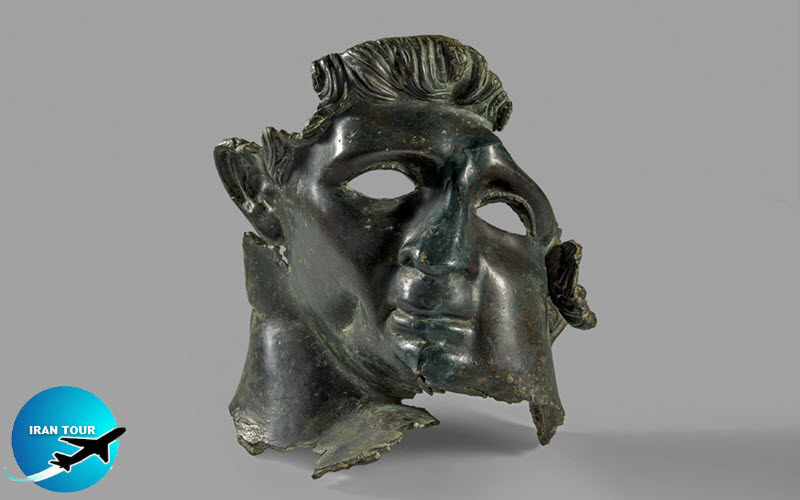 |
7. The Seleucid Period, The campaigns of Alexander the Great and his successors, the Seleucids, who held sway over large parts of Iran for nearly two centuries, introduced the people of West Asia, including Iran, to certain aspects of Greek culture, including their deities. Here we see Bacchus (a.k.a., Dionysus), the Greco-Roman god of the grape harvest, wine, and wine-making, in a drunk, comical pose - in sharp contrast to the dignified fig. use of local deities. This indicates the ushering in of a new era of more lax customs and attitudes. This interesting find comes from excavations at Susa, where a large Greco-Macedonian population settled in the aftermath of Alexander's conquest and the ensuing Seleucid period. This population later transformed large parts of the surrounding Susiana plain and the Zagros foothills into vineyards, for obvious reasons.
 |
8. The Parthian Period, This painted pottery rhyton, or drinking horn, is a fine example of a long tradition of zoomorphic vessels used during banquets for drinking beverages, most notably wine. Rhytons appear in West Asia as early as the 2nd millennium BCE, but become very popular throughout a vast region from the eastern
Mediterranean basin to the Iranian Plateau in the 1st millennium BCE. During the latter period, rhytons were manufactured both from precious metals (i.e., gold and silver) for use by the elites and from fairly inexpensive alloys such as bronze or even pottery for use by the lower echelons of society. The tradition of holding banquets and heavy drinking continued through the Parthian period when this rhyton was made. The goat-shaped handle is reminiscent of the importance of the caprine figure in the art of Iran from prehistoric times well into the Islamic period.
 |
9. The Sassanid Period, This finely made mosaic depicting a noblewoman is a remarkable Iranian copy of the distinctly Roman art of mosaic making, evidence of which could be found in large numbers of buildings throughout the vast Roman Empire. From historical sources, we learn that large contingents of the Roman army, along with Emperor Valerian (ca. 200-264 CE), were defeated and captured by the Sassanid Persians at the Battle of Edessa in 260 CE and were subsequently sent to live in exile in Iran, to work on various construction projects. It could be argued that this piece was made by a Roman craftsman following Roman techniques but using a Persian design. It is therefore not surprising that the large building in which this mosaic - and others like it - were discovered was called the 'Palace of Valerian' by Roman Ghirshman, the French archaeologist and excavator of Bishapur. The city was built by the Sassanid Shāhanshāh Shapouri (r. 240-270 CE) who defeated the Romans at Edessa and is reputed to have sent Valerian to live the rest of his life in exile at Bishapur in a fine building decorated with Roman-style mosaics - a nice gesture of Iranian hospitality in not so pleasant circumstances (for Valerian, of course).
Writing a history of Iran based on a handful of archaeological finds widely dispersed across time, space and function is a challenge. In the absence of historical documents the archaeological record, albeit meager and subjective, is all we have at our disposal to put together a general history of human societies in Iran. The archaeological record is mute; it is up to us to extrapolate useful information from the finds currently extant, and our method of doing so is only just beginning to be developed. Our journey - the task of putting together a detailed and comprehensive history of Iran - has only just begun.
- Details
- Category: What to see in IRAN





















